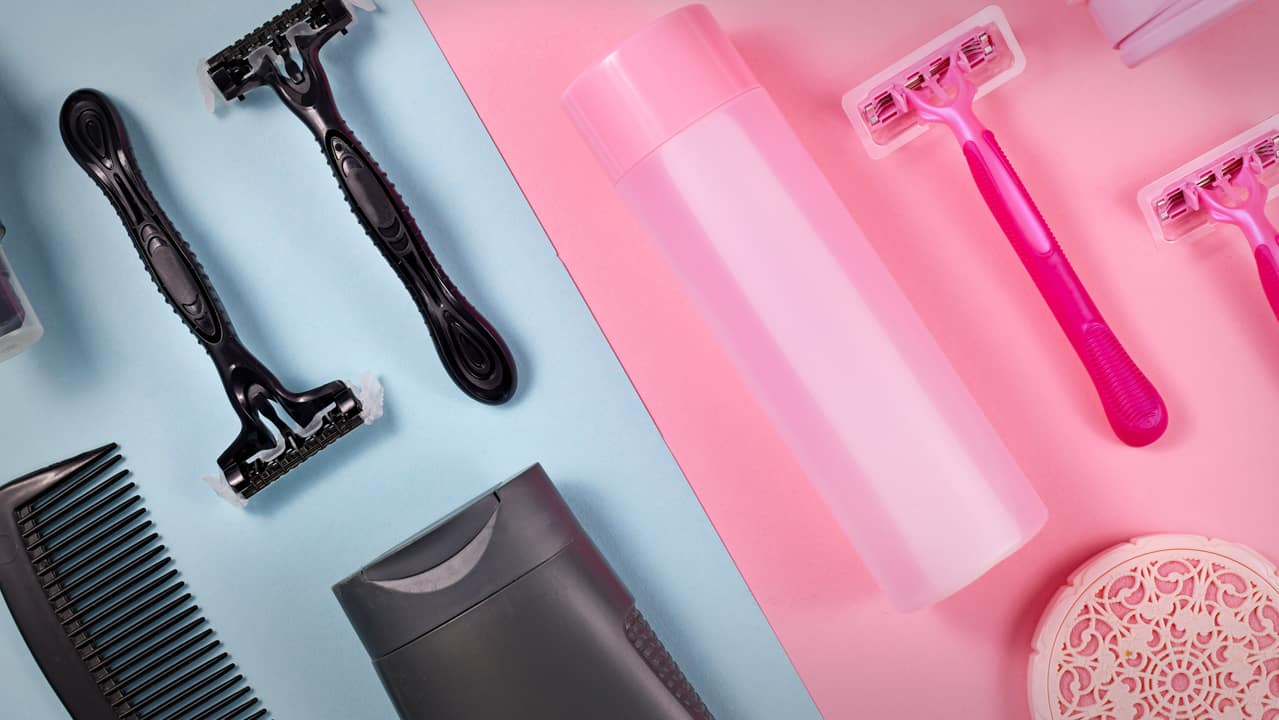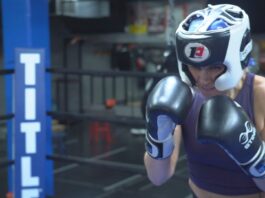
Shoppers Drug Mart is taking action following an investigation by CBC’s Marketplace that found painkillers labelled as a treatment for menstrual cramps cost more than near-identical painkillers marketed for headaches and other pain.
The drugstore’s parent company, Loblaw, told Marketplace over email on March 15 that it “recognizes the importance of equity and access and will align the price of these products within a week.”
As of March 24, more than a week after that email was sent, prices online were aligned but inconsistent across stores in the Greater Toronto Area.
Marketplace found the two examples of the so-called pink tax after comparing products found in the painkiller aisle to those found in the feminine product section of various Shoppers Drug Mart locations across the Greater Toronto Area and online.
WATCH | Marketplace creates coffee shop with a twist — women pay more than men for the same brew:
Marketplace was able to find multiple examples of the so-called ‘pink tax’ at popular retail stores that drive up costs for products marketed toward women, and even set up an experiment to see how consumers would react when the pink tax is front and centre.
Bayer’s Maxidol was located in the feminine hygiene aisle alongside sanitary napkins and tampons. It is marketed as “fast relief from menstrual cramps, headaches, backache” and other pains. The product contains 220 milligrams of naproxen sodium, a non-steroid pain reliever.
Bayer also makes Aleve, a drug that also contains 220 milligrams of naproxen sodium. Aleve was located in the pain relief aisle of the stores.
Aleve and Maxidol have near-identical inactive ingredients, both come in liquid gel capsules and both boxes contain the same number of caplets.
Aleve was regularly priced at just $13.99, and was purchased on sale for $11.49. Maxidol, however, rang in at $16.99.
York University marketing associate professor Ela Veresiu called the price difference “outrageous and shocking, especially since women cannot help having their biological situation happening every month.”
She says that when it comes to the pink tax, while price differences are often small, over time they add up.
“We should not be penalized for being women,” said Veresiu.

Marketplace also found two different versions of Life Brand generic naproxen sodium tablets, one labelled “naproxen menstrual pain relief” and the other simply “naproxen.”
Life Brand is owned by Shoppers Drug Mart’s parent company, Loblaw.
Labels on both versions of the Life Brand products describe 220 milligrams of naproxen sodium, 24 caplets, up to 12 hours of relief, and identical active and inactive ingredients.
Both boxes also claim the product is effective for menstrual cramps. However, the box labelled “menstrual pain relief” on the front cost 50 cents more than the box without.
Shoppers attributed the price difference between Life Brand’s naproxen pills to manufacturers charging more for the product advertising menstruation pain relief on the front.
Loblaw said the price difference for Bayer’s Maxidol and Aleve were because two different departments purchased the products and hadn’t done a pricing review between them.
Veresiu applauds the company’s recognition of the unfair price markup for women, and its willingness to change it. She hopes others follow suit.
“It just goes to show that the piece you’re covering on price discrimination is real,” said Veresiu.
Pink tax has long been documented
The pink tax is not a new phenomenon. Examples of women, or people who identify as women, having paid more for services like haircuts and dry cleaning have long been documented.
In 2021, Canadian data company Parsehub scraped the websites of Walmart Canada and Shoppers Drug Mart and found that overall, women paid more for personal hygiene products and more than 50 per cent more for deodorant and body wash.
Legislation has been passed in both the state of New York and the state of California that prohibits price discrimination on the same goods and services based on gender.
California’s laws came into effect in January of this year. There it is estimated women pay about $2,381 more for the same services and goods than men per year, or a pink tax of approximately $188,000 over the course of a California woman’s lifetime.
Marketplace asked Canada’s Minister for Women and Gender Equality and Youth Marci Ien for an interview about its findings. She declined, but in an emailed statement her office agreed the pink tax is a problem that continues to threaten women’s economic security in Canada.
The email went on to say that the government is funding research that will “examine the gender price gap in several key sectors of the Canadian marketplace,” but her office would not say if it’s considering similar legislation to that which was passed in the United States to directly address the issue in this country.
Pink tax still affecting toys, razors
Marketplace also found apparent examples of the pink tax at Toys R Us and Walmart.
In Walmart, Marketplace found near-identical razors and deodorant priced higher when marketed toward women. A pack of four pink Equate three-blade disposable razors for women cost $4.47 for four razors, or $1.11 per razor. Meanwhile, a pack of eight Equate three-blade green and black disposable razors for men cost $6.98, or $0.87 per razor. The pink razors were not sold in a pack of eight.

Degree sold two comparable types of deodorant, both called UltraClear Black and White, offering 72 hours of effectiveness. The product marketed to women had an image of a black dress on the front and cost $6.97 for 74 grams. The product marketed to men contained more product — 76 grams — for $5.27.
In an email statement, Walmart told Marketplace the razors were not comparable, and instead suggested that a better comparison would be the 12-pack of Equate Twin Blade disposable razors, which the company said it is “proud to offer for $1.98 whether they’re marketed to men or women.” However, the razors they referenced had fewer blades than the items Marketplace inquired about, and Walmart confirmed the Equate three-blade women’s razors are sold exclusively in a four-pack.

Regarding the deodorant, Walmart said there are a number of factors that could impact the price of a product, and “it’s always a customer’s choice to purchase the product that is right for them, based on personal considerations including ingredients, attributes, colour or pack size.”
Meanwhile, at Toys R Us, a pink bike cost $10 more than a nearly identical-looking blue bike by the same company.
“[It’s] shocking, but not surprising,” said Veresiu.
Similar-looking kids’ outfits from Levi’s also had a $5 price difference, with the pink outfit costing more.

Toys R Us told Marketplace the price differences are because the pink bike is a newer model than the blue bike. The company also said that while those Levi’s outfits appear similar they are not, and said that the wholesale cost of the two products is different.

Veresiu says those looking to fight back against the pink tax should buy from companies that don’t segment their products based on gender. She urges men to speak up too.
“The responsibility to bring about change in our marketplace shouldn’t just fall on the shoulders of individuals who self-identify as women,” Veresiu said.
Fighting back against gendered pricing
There are a few companies actively fighting against the pink tax, including Toronto’s LES Studio, a hair studio specializing in genderless cuts.
It’s a space co-owner and hair artist Nancy Haddad says she craved growing up.
“There are a lot of the women and women-presenting people out there that would like a short haircut, that if they were to go into a salon or barbershop they’d be charged differently. So I think it’s important to have spaces like this where it doesn’t,” she said. “Hair has no gender.”
The studio charges by length and even avoids classically gendered words like “salon” and “barbershop.”

Customer Mel Clarke says going to typical hair salons left her unhappy with her hair.
“It always seemed important for them to kind of put that feminine-presenting kind of touch on it,” she said, adding that she would leave the salon and immediately mess up her hair, removing the “poofiness.”
“It’s been really great and exciting and important to have a space where I feel I can be represented … and not have to worry about paying twice as much simply because I identify as female,” said Clarke.
Haddad says not much needs to change in other hair spaces that would like to be more inclusive.
“[The studio] has mirrors, it has chairs just like any salon or barbershop does,” Haddad said. “The only difference is our price list.”













